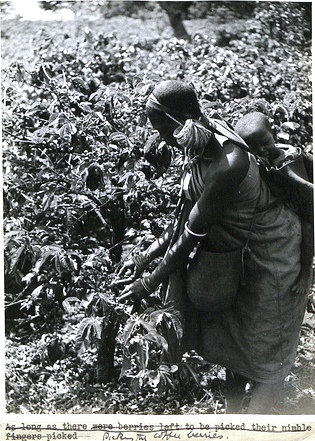 That, we are told by the BBC’s Material World presenter Quentin Cooper, is what Jonathan Swift thought coffee makes us. And I for one would agree with Mr Cooper that it is indeed also how Dr Aaron Davis, Head of Coffee Research at Kew Gardens, and global crop wild relative expert Dr Nigel Maxted, from the University of Birmingham, came over in an interview with him yesterday. It’s all because of that Kew study on the effects of climate change on wild arabica, which is really making the rounds, not least thanks to the BBC. You can download the whole podcast, but we’ve taken the liberty of filleting out the 10 minutes of the programme which feature Drs Davis and Maxted, with many thanks to the BBC. More background on crop wild relatives in Europe from the PGR Secure and the older PGR Forum project website. IUCN has a Red List. There’s a Global Portal. And a big global project on crop wild relatives too. Who says these things are not getting enough attention?
That, we are told by the BBC’s Material World presenter Quentin Cooper, is what Jonathan Swift thought coffee makes us. And I for one would agree with Mr Cooper that it is indeed also how Dr Aaron Davis, Head of Coffee Research at Kew Gardens, and global crop wild relative expert Dr Nigel Maxted, from the University of Birmingham, came over in an interview with him yesterday. It’s all because of that Kew study on the effects of climate change on wild arabica, which is really making the rounds, not least thanks to the BBC. You can download the whole podcast, but we’ve taken the liberty of filleting out the 10 minutes of the programme which feature Drs Davis and Maxted, with many thanks to the BBC. More background on crop wild relatives in Europe from the PGR Secure and the older PGR Forum project website. IUCN has a Red List. There’s a Global Portal. And a big global project on crop wild relatives too. Who says these things are not getting enough attention?
Read that paper on Arachis, Vigna and Solanum Nigel alluded to.
And dream about attending that FAO workshop he mentioned for next week.